Out of the cold: Tom Hollins on his winter Wainwrights record
John Manning talks with the ultrarunner about his epic self-supported winter Wainwrights round – about bad weather, good cafés and the enduring motivation of landscape
Yorkshire ultrarunner Dr Tom Hollins came close to abandoning February’s winter Wainwrights attempt after ferocious winds repeatedly beat him back from Gavel Fell, and forced him to crawl to the summit before seeking sanctuary in The Gather, Ennerdale, where, exhausted, he fell asleep.
Yet Tom returned to battle more appalling weather and establish a new fastest known time for a self-supported winter round of the 214 Wainwright fells in 8 days, 9 hours, 44 minutes (and 57 seconds… if you’re counting).
The Gavel Fell epic (the fell is centremost of the five Loweswater Fells) was the most challenging moment on Tom’s audacious 350.99 mile (38,000 metre ascent) round, accomplished without a support team just a month after the 51-year-old came joint-second in the new Spine Sprint race, over 46 rugged Pennine Way miles between Edale and Hebden Bridge.
“In terms of planning, I’d just done the Spine Sprint and hadn’t done any Wainwrights-specific training – steep hills with poles – which I’d normally do for that kind of event,” said Tom, who lives with his family in Ilkley, West Yorkshire, and works as a consultant anaesthetist (and deputy medical director) at Airedale Hospital. “I’d just focussed on fast running. But I’d been thinking about how to do the Wainwrights and had come to the conclusion that the most important thing was not necessarily my own fitness, but the weather.
“I felt really good after the Sprint, so I booked leave for the end of February. A week beforehand, winds were forecast to be mild-to-moderate with rain, but nothing impossible, so I committed. Then, literally 24–48 hours before I was due to start, the forecast was upgraded to gale force winds with constant rain. I was like, ‘Oh well, I’m committed now…’”
A bruising start
Montane-sponsored Tom set out from Keswick Moot Hall on Thursday, 20 February, at 8.19am, straight into ferocious winter conditions.
“It was grim – I've got so many bruises and so many holes in my kit! I don't know how many times I got chucked to the floor by the wind in that first 48 hours. On the second morning, I tried to get to the top of Gavel Fell nine or ten times. It’s quite a low-level summit, but I got beaten back repeatedly. Eventually I had to crawl to the top on my hands and knees.
“I considered pulling out at that point. I hadn't planned to go out to Ennerdale village, but I had to escape the weather. Nor did I know there was a café there. When I stumbled into The Gather, the staff were amazing; they let me have food and drink, and I fell asleep for a couple of hours.”
“When I awoke, the wind had died down and there was set to be a 24-hour weather window, so I carried on. I made it to Langdale, where the weather caused me to pause again for several hours. When I resumed, the wind blew me in the right direction which was brilliant, even though I was wrapped up in my hood, visibility was terrible, and I struggled with both navigation and the wind.
“I had a period of snow over Helvellyn, with beautiful views of snowy tops. The weather was incredible for the last three or four days. It was really atmospheric – the snow was never more than ankle-deep, so it didn’t make things difficult. I avoided going down Swirral Edge because of frozen ground. Other than that, the going was all fine. I was lucky that the bad weather came early – I probably would have stopped if it had come through on Day 5 or 6.”
In Steve’s footsteps
Like most athletes who attempt record journeys of the 214, Tom followed – with minor amendments – the route devised by runner Steve Birkinshaw when, in June 2014, he broke Joss Naylor’s 28-year-old Wainwrights records in 6 days and 13 hours.
“Steve did an amazing job. There have been a few modifications to his route over time but, overall it’s the same itinerary he planned. Having done the summer Wainwrights before, I’d made slight revisions of my own – one, which others have followed since, was to tackle Helm Crag after Steel Fell, then stay on high ground round to Tarn Crag.
“There was also the change I’ve already mentioned – done on the hoof – where I avoided Swirral Edge and detoured around Whiteside and Raise to summit Catstycam, but that didn’t add much time because of the ground conditions: even though the distance was further, I moved faster on the easier terrain.
“The most significant change I made, which might actually have been faster than Steve’s route, was visiting Mosedale Cottage in the Far Eastern Fells, which is on a direct line between Grey Crag and Selside Pike. On Steve’s route you contour around it, but because you’re still bobbling up and down on that undulating line, there’s as much ascent as dropping into the valley and up the other side, which is shorter.”
That diversion to Mosedale Cottage also gave Tom the personal satisfaction of visiting three of Lakeland’s four bothies: Mosedale Cottage, Dubs Hut on Fleetwith Pike, and Lingy Hut in the Caldbeck Fells, between High Pike and Knott. Only Warnscale Head bothy – a stone’s throw from Dubs Hut – remained unvisited.
“I had originally hoped to stay in all the bothies [it is permitted on a self-supported round] and planned a kit drop in Mosedale Cottage, but I ran out of time during the prep stages. I had to be content with using the bothies for a sock change. But it was nice to have visited them, at least.”
Experience of the veteran
In most sporting disciplines, athletes in their early 50s might expect their best days to be behind them, but Tom is going from strength to strength. A few weeks before his winter Wainwrights success (to qualify as a winter round, it must be completed before 28/29 February), friend Carol Morgan – also 51 – set a new fastest known-time for a supported winter Wainwrights round of 8 days, 1 hour and 51 minutes, beating the original record – 8 days, 6 hours and 44 minutes – established by James Gibson in 2021.
Is age an advantage in such a tough sport?
“I think there are minor advantages,” said Tom. “I probably have more mental endurance, though not more physical endurance; I’ve definitely got slower since about the age of 45, but I've also grown more experienced, and my results are generally no worse.”
He attributes that to greater experience: knowing how to manage sleep deprivation, when to stop, and when to eat.
“I think it depends on the age at which you accumulate that greater level of experience. If you do so when you’re young and at peak fitness, then you’re going to be better than the old guys. Ultrarunning’s pushed boundaries in recent years and a lot of the youngsters coming to it from fell running are going to smash these records.”
At the same time that then-30-year-old James Gibson had been setting the bar for a supported winter round in 2021, Tom had been making a similar attempt but had been forced to pull out on the fourth day. His Wainwrights challenge, therefore, represented unfinished business. But with Carol having already beaten James’ time, Tom had to find a different way to make his mark.
“I did look at an unsupported round but, honestly, I didn't think I had the skills to do it,” he said. “I asked FKT (Fastest Known Time) about the rules for unsupported rounds, thinking I might have been able to stay in the Lake District bothies, and maybe do a bit of camping, so at least I’d have a roof over my head.
“But they said, ‘No’ – sleeping in a bothy, or even staying in a public toilet other than just to use the toilet, makes you self-supported. To classify as unsupported you’ve literally got to carry every single bit of gear – food and a tent – and only sleep in the tent from the start. I saw that as a no-go in winter. I also didn’t think my back would carry eight days’ worth of food. To be able to do that, I think you need to have had a military background – to have trained your back.”
Indeed, the only (known) person to have completed an unsupported round is Special Forces veteran Christopher Gaskin, who backpacked the route in May 2021, in 11 days, 10 hours and 58 minutes.
Instead, Tom chose to dispense with a support team and go self-supported, carrying his own kit, doing pre-run food drops, and staying in B&Bs.
“The self-supported rules are interesting, because there are some quite arbitrary cut-offs which I guess are difficult to define,” said Tom. “Essentially, you are not allowed to receive help from anybody on the route, but you can make use of public facilities: you can buy food from shops, stay in B&Bs and stash kit along the route. So I selected six B&Bs and hotels, and drove round the day before to drop kit at each. In using B&Bs, I essentially created my own checkpoints.”
Perversely, perhaps – other than the round’s seasonal nature – that put his challenge in same category as James Forrest’s self-supported record of 2 weeks, 11 hours, 5 minutes and 45 seconds, set in the autumn of 2020, which Tom’s run easily smashed. James backpacked the route in one continuous trip, carrying everything and sleeping in a tent each night. Because James also did food drops beforehand, both rounds were classed as self-supported, even though James slept out every night ,while Tom enjoyed a proper bed – though he often didn’t arrive in that bed until the early hours of the morning.
Nor was it cheap. “I spent getting towards a grand on food, logistics, B&Bs and hotels,” said Tom. “I am sponsored, so my kit’s provided, but if I’d had to buy all my kit as well the cost would have been prohibitive. So, while I’m proud of completion, and of the time I did, I appreciate that if it doesn’t get beaten in a hurry that might not be because people aren’t fast enough – it’s because it's too frikkin’ expensive!”
“While I’m proud of completion, and of the time I did, I appreciate that if it doesn’t get beaten in a hurry that might not be because people aren’t fast enough – it’s because it's too frikkin’ expensive!”
Motivation
Tom’s ultrarunning CV is impressive. January’s Spine Sprint success made him the only person to have podiumed at each of the winter race series’ variations: he won the main 260-mile Pennine Way race in 2017 and the Spine Challenger South (the first 110 Pennine Way miles) in 2016; and came second in the Challenger North (the other 150 miles, to Kirk Yetholm) last year.
He also holds the fastest known time – 1 day, 17 hours, 18 minutes and 15 seconds – for the Dales Mountains 30, which, like the Yorkshire Three Peaks Challenge, starts from the Pen-y-ghent Café in Horton-in-Ribblesdale.
“That’s not an organised event; it's an any-time event, similar in concept to the Wainwrights. The distance is something like 130 miles, the ascent 32,000 feet, so it doesn't sound nearly as significant as the Wainwrights, but it’s got no trails, and the terrain is really rough – all grassy tussocks and bog. I’m waiting to see if the Spine introduces another format – a Sprint North, from Bellingham to Kirk Yetholm via the Cheviots, which they might for next winter. If not, I may have a go at a winter Dales Mountains 30.”
Tom also holds the record for the Yorkshire Three Peaks Ultra, a 44-mile version of the classic Three Peaks run, which starts from Hawes instead of Horton, adding 20 miles’ distance.
Hard to believe, then, that Tom is a latecomer to running, having taken it up around the age of 30. “I made the change from walking into running when I had kids and realised that, suddenly I only had a couple of hours in which to get to the top of a hill – so I tried running up, because I no longer had the time to walk.
“I’d walked the Yorkshire Three Peaks several times, then one day decided I’d run it. It was the first time I’d run an event – before that, I’d just jogged round local hills. When I reached the last checkpoint, they hadn’t even set it up and, when I finished – the time was around four-and-a-half hours – I realised I was halfway up the field. That made me think that maybe I could run competitively.
“Prior to that, I’d always seen people who ran mountains as insane, hyper-fit people who I couldn’t consider going out with. Now, I don't think that’s true; it’s about gradually building up, gaining experience and seeing what your boundaries are.”
“I’ve never been particularly interested in running,” he added, surprisingly. “But I’ve always been interested in mountains.”
“I’ve never been particularly interested in running, But, I’ve always been interested in mountains.”
Tom relishes the benefits of prolonged time spent in the hills, rather than those few hours he’d once have spent on a walk. “The longer you’re out, the more you feel at one with your surroundings; you really start to feel part of the environment. With all those late nights and early mornings, you see spectacular things that you wouldn't normally see.
“During the winter Wainwrights, I had herds of deer running round me at one point, and I saw a badger in the woods – I’d never seen a badger walking around before – the wildlife, and some of the sunrises and sunsets, were amazing.
“My motivation comes from these landscapes.”






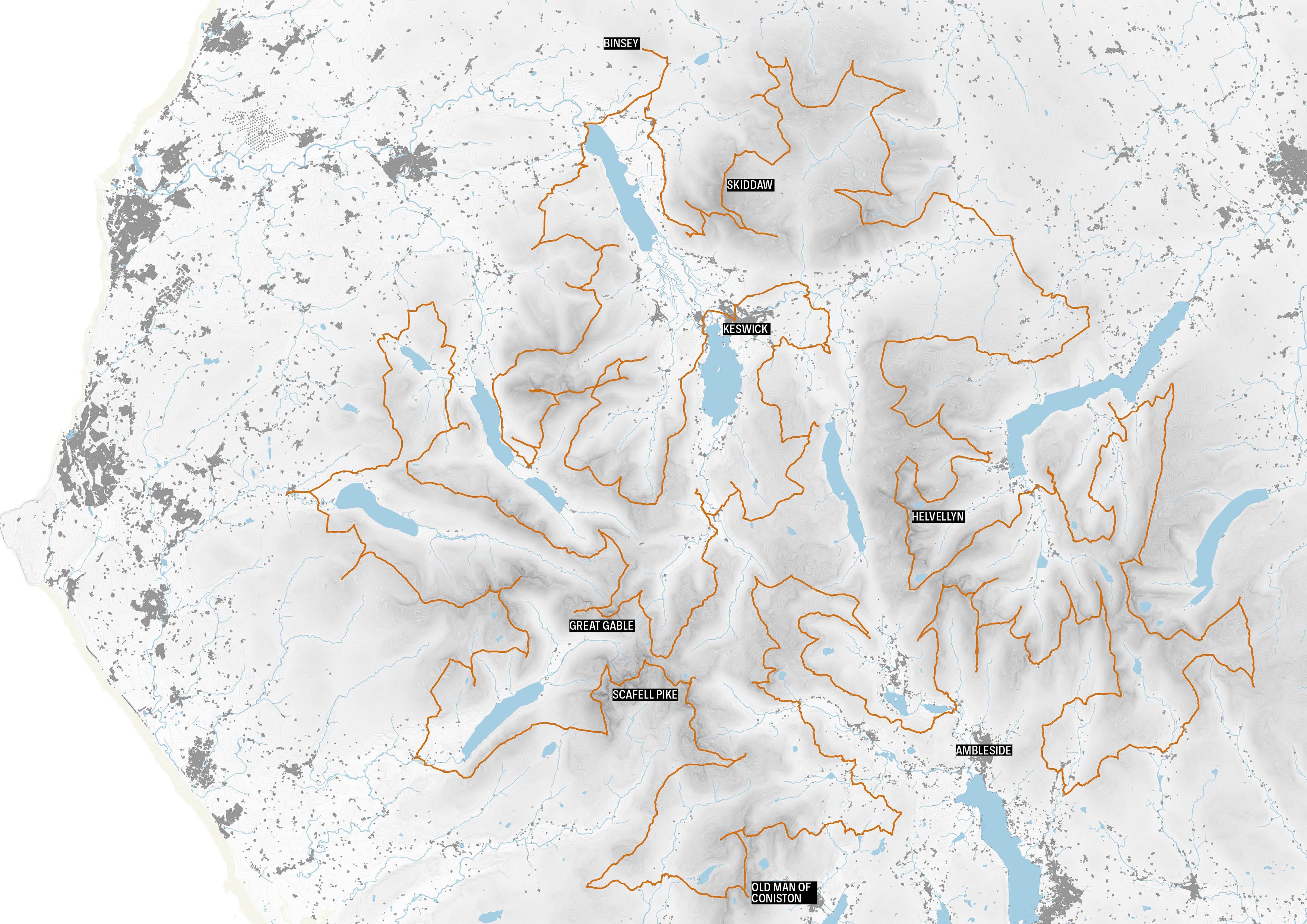
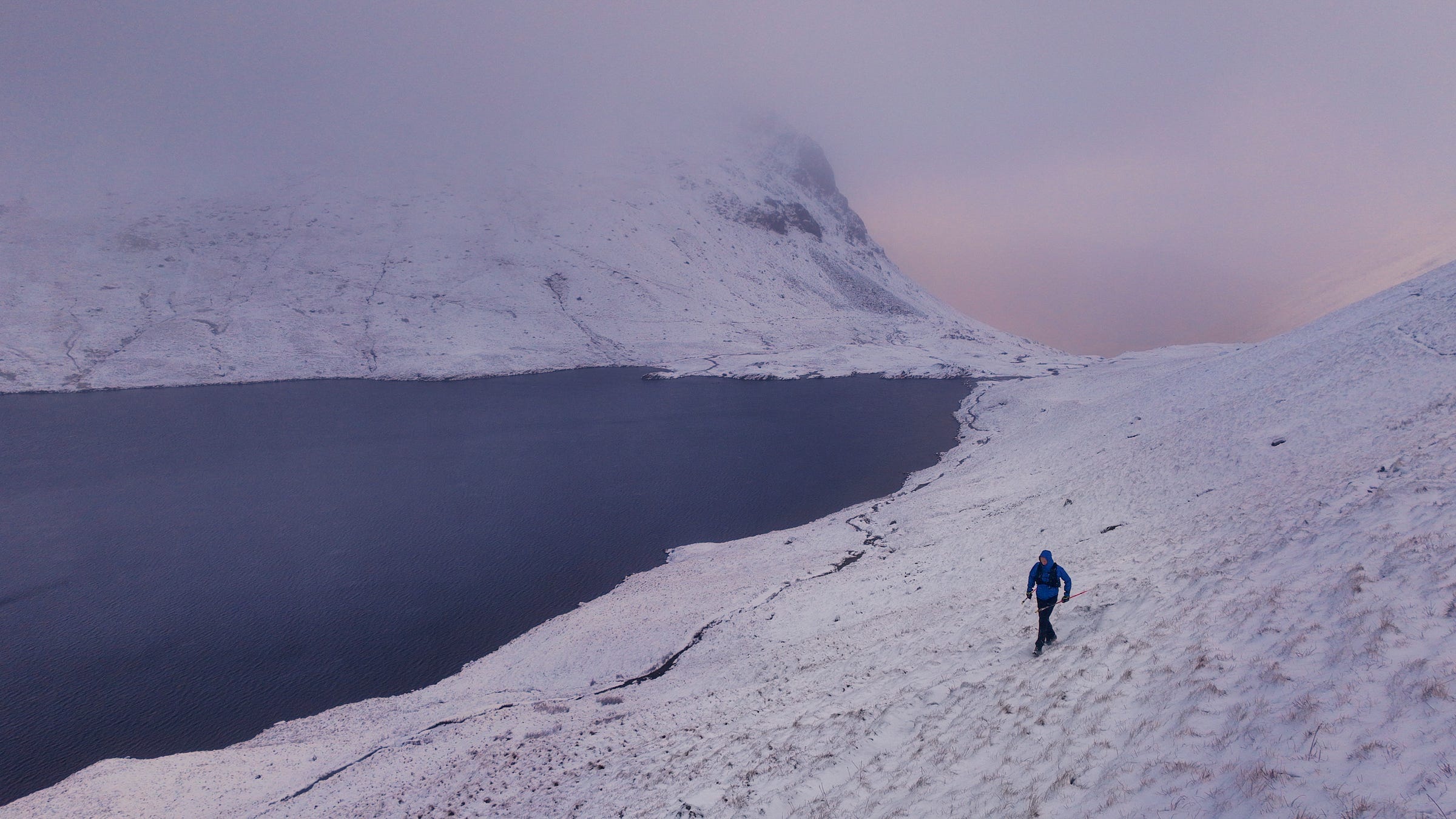
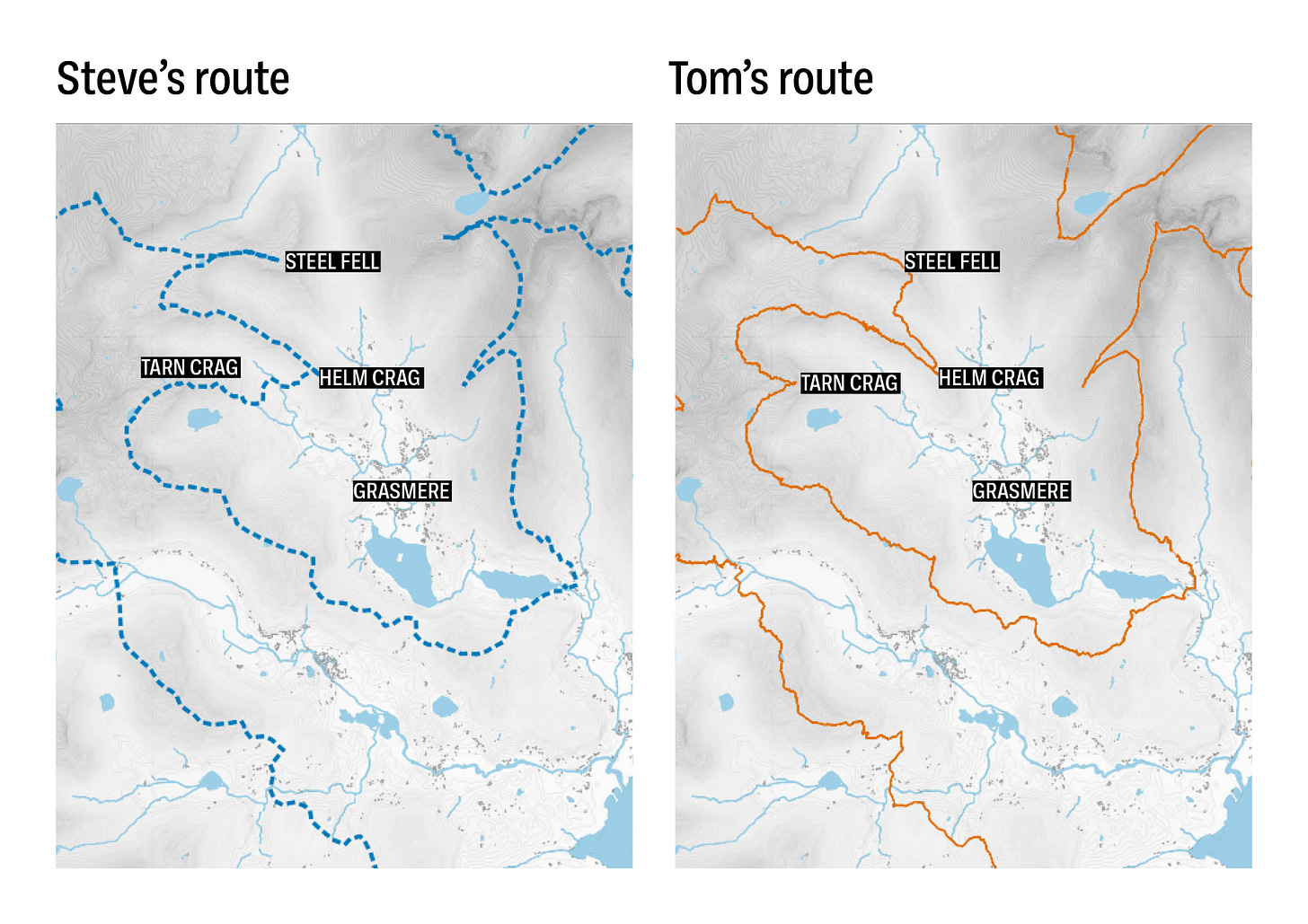
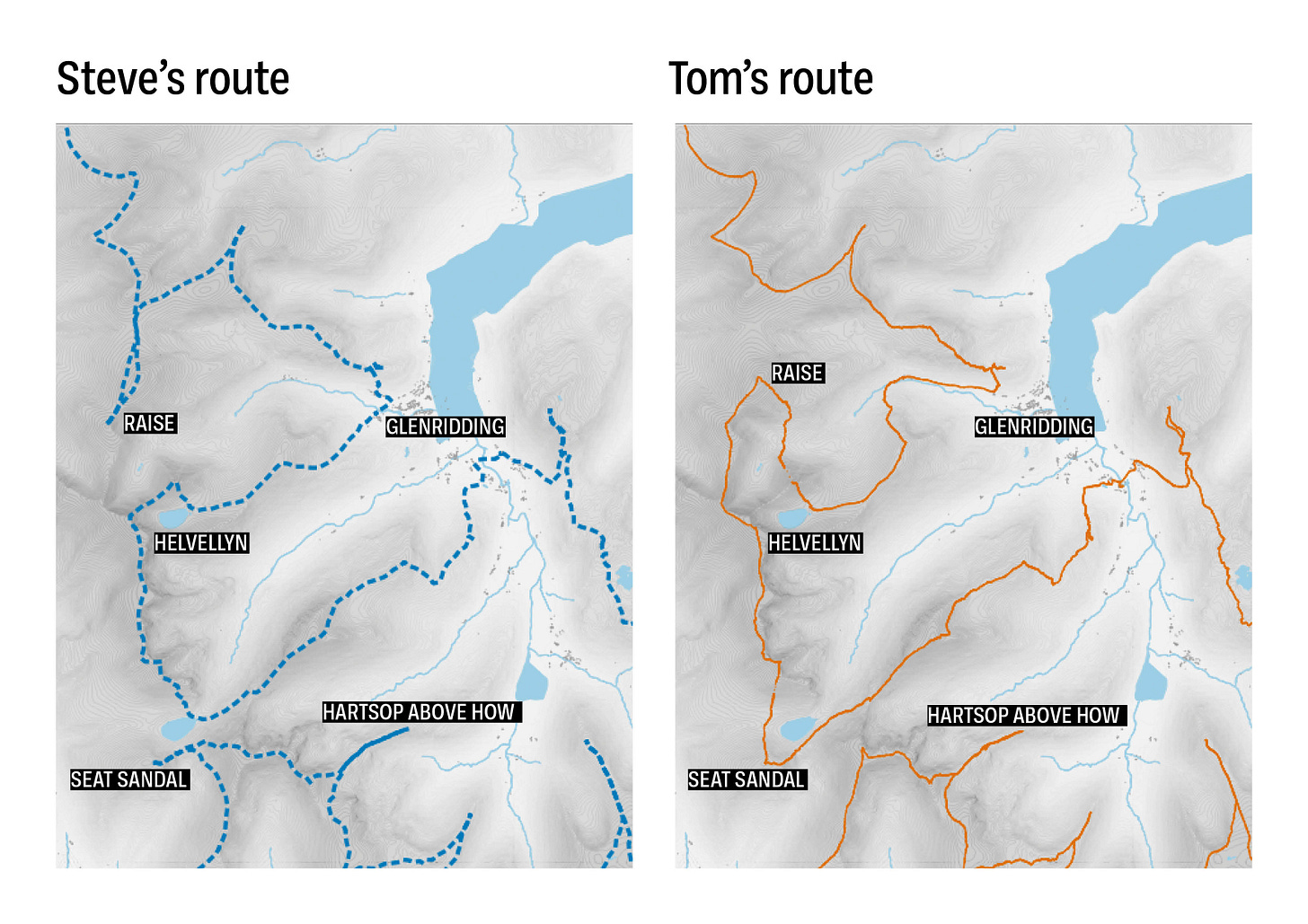
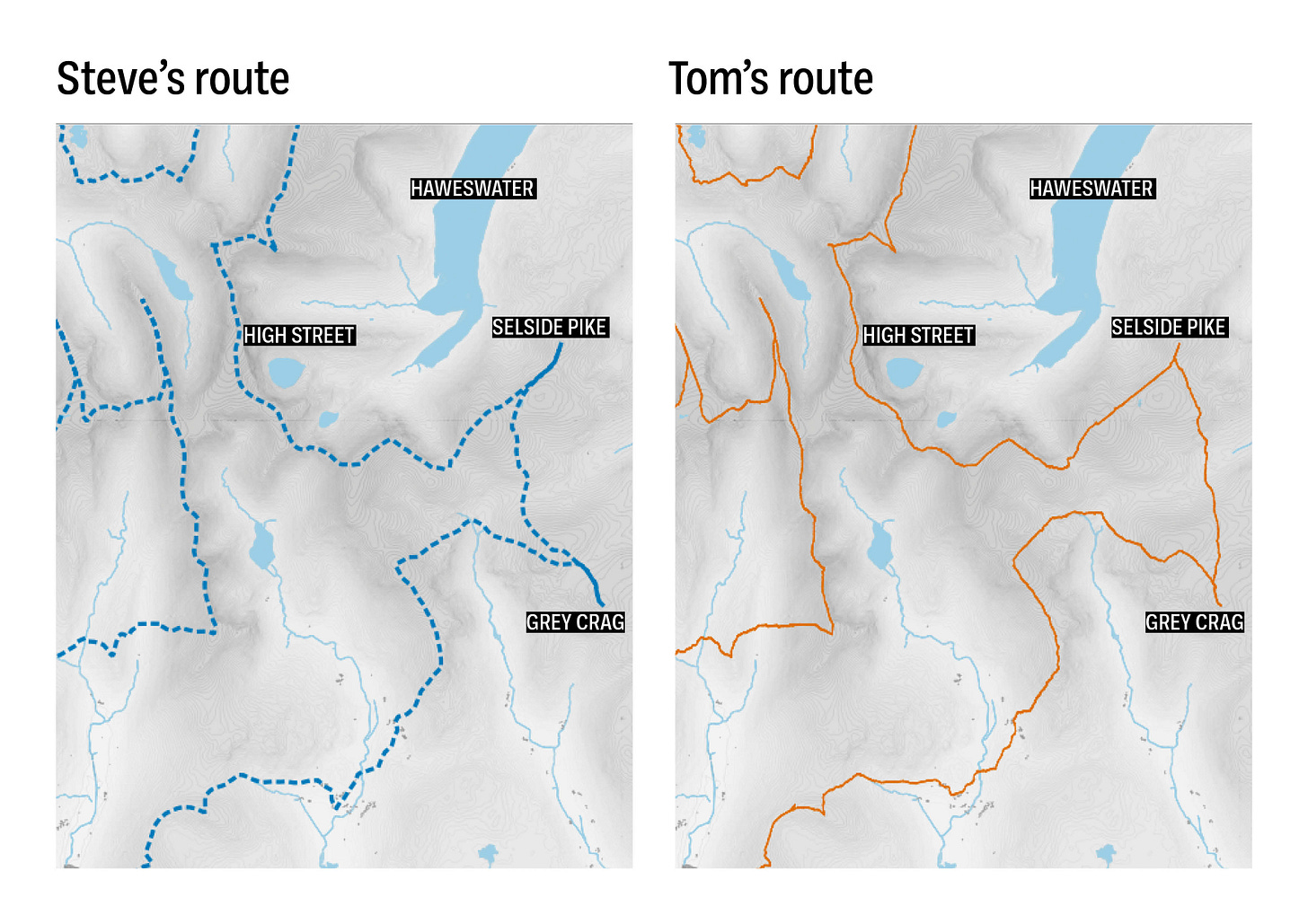
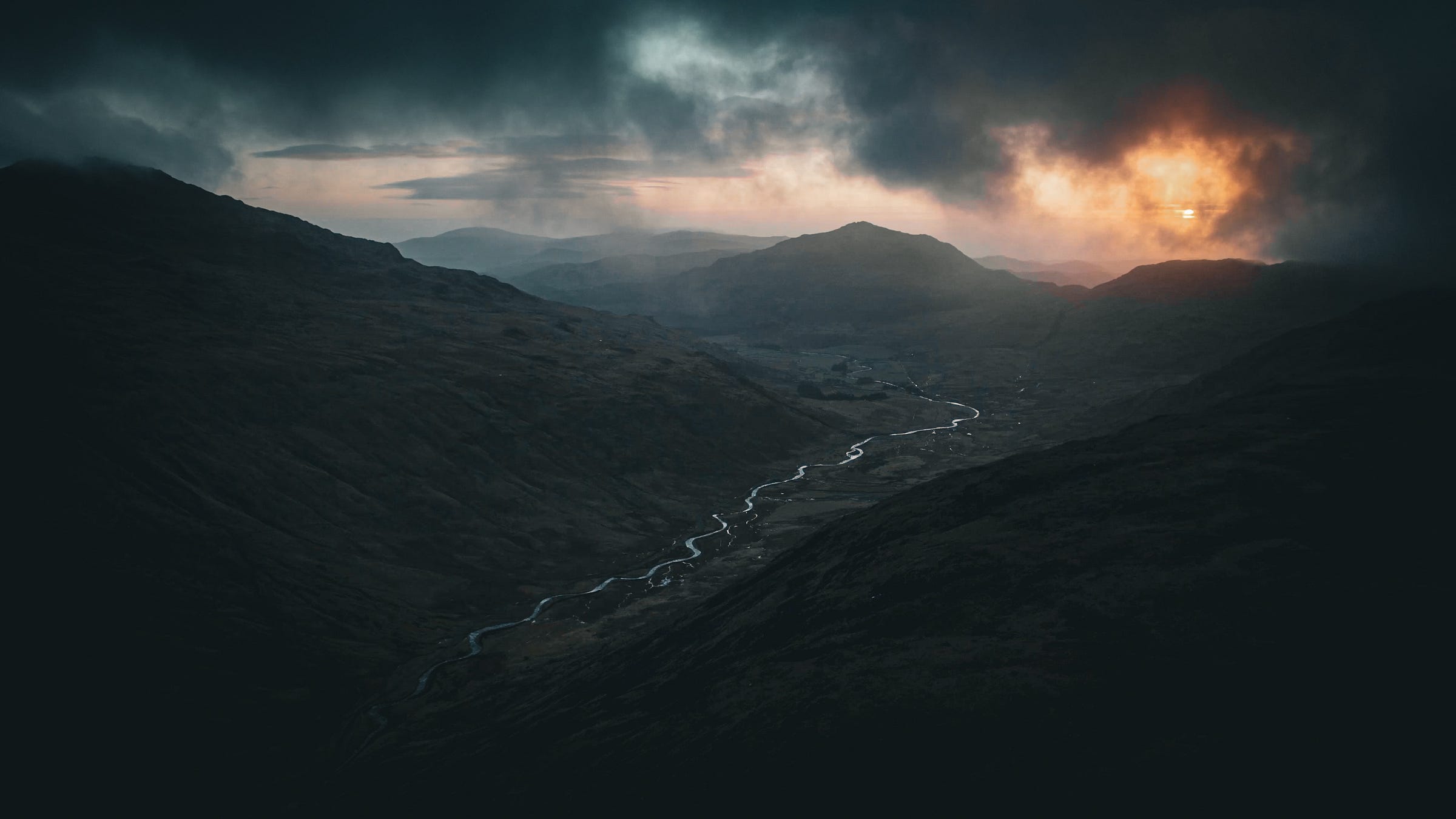
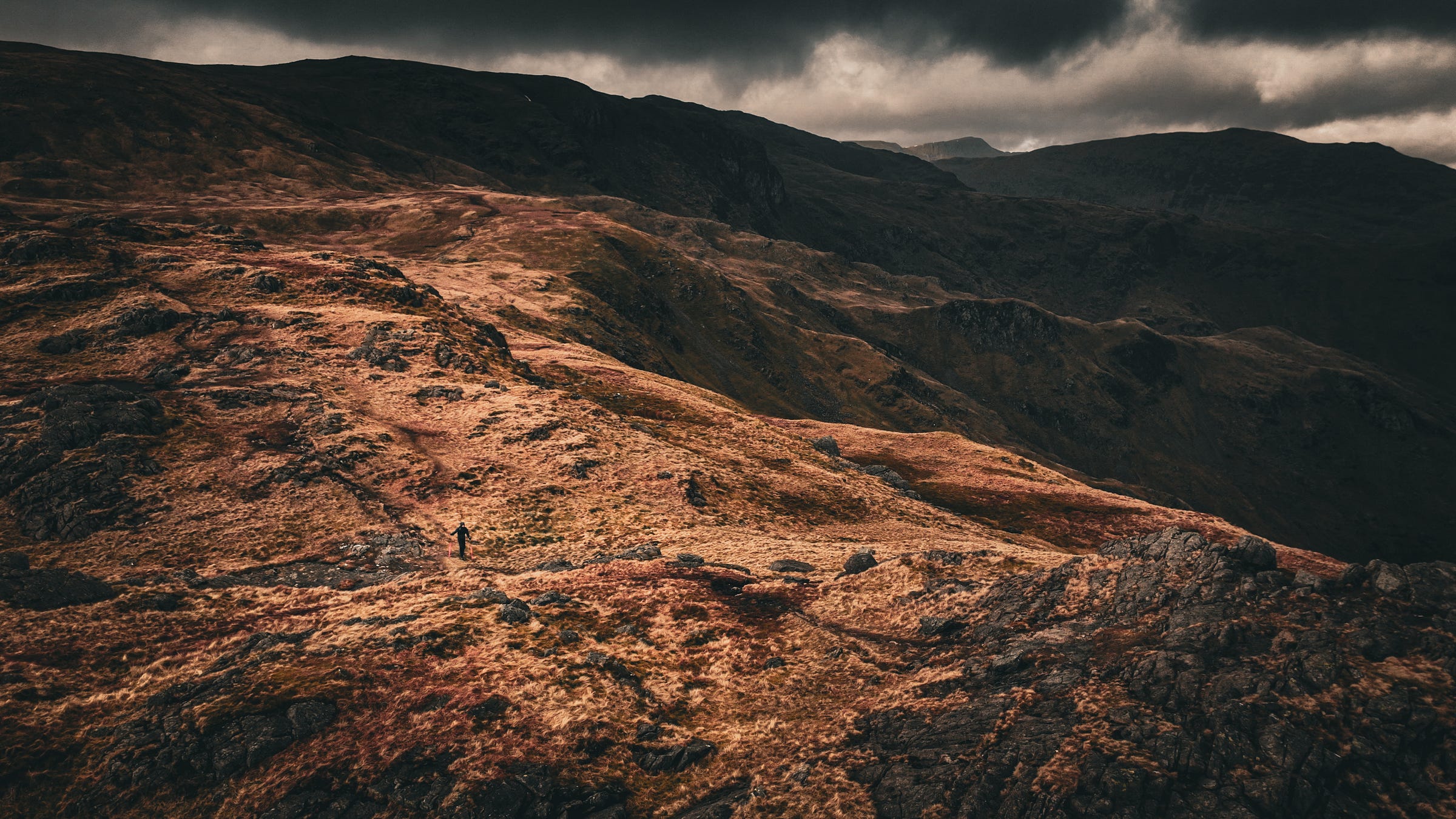
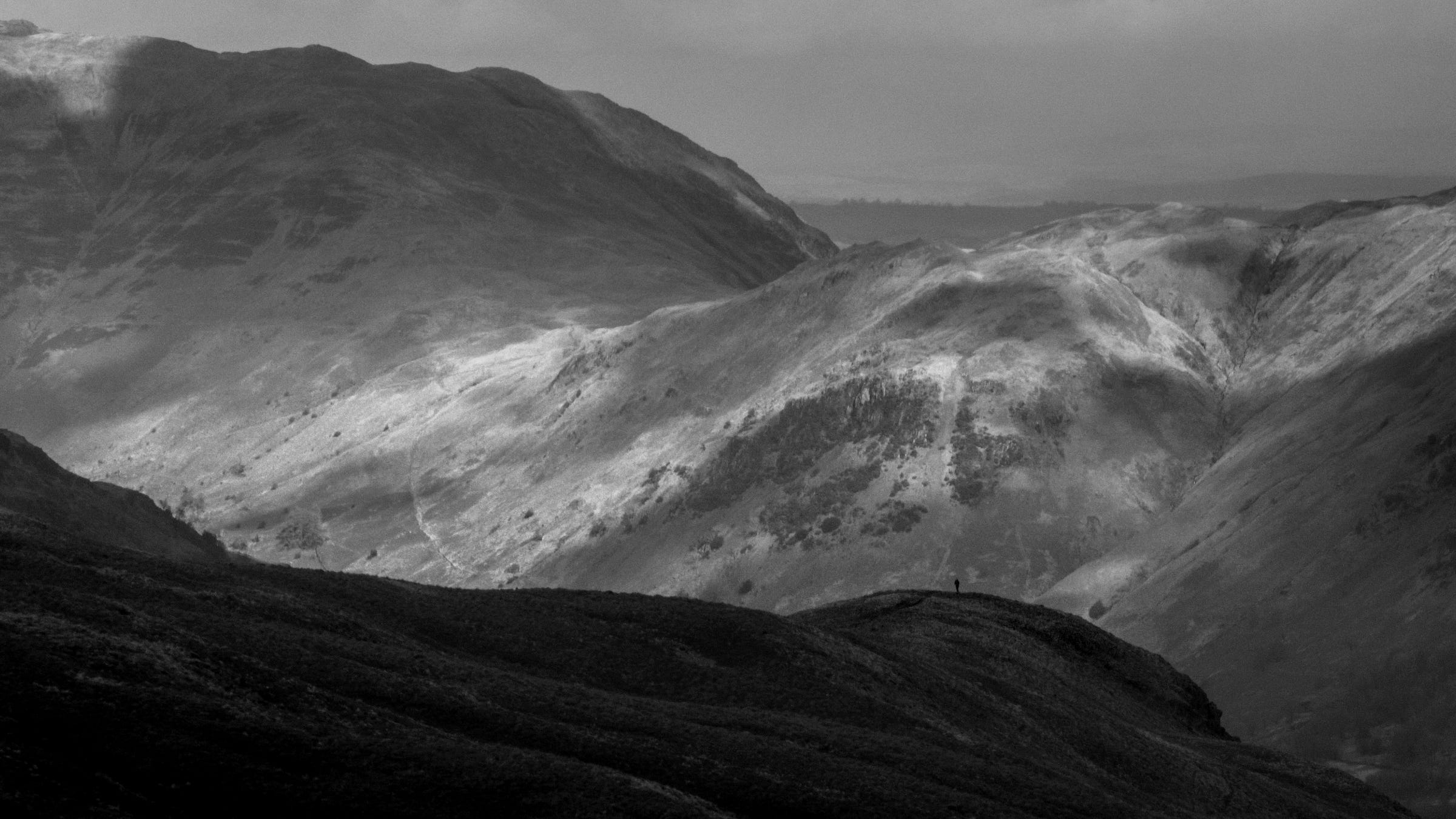
John is a welcomed addition. Always look forward to his work.
Superb: a wonderfully human write-up of an almost superhuman feat. Thank you!